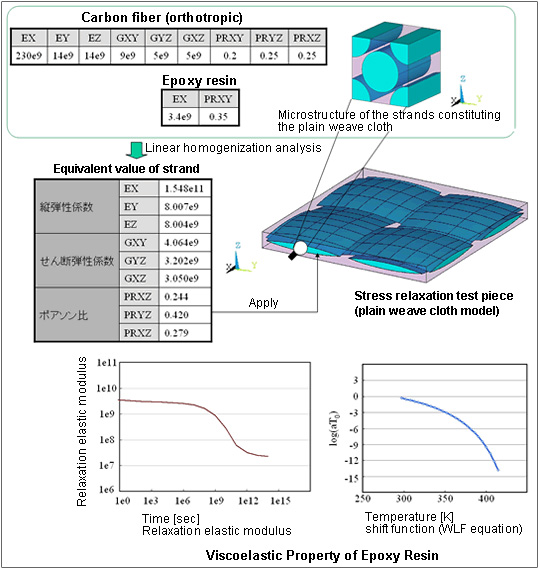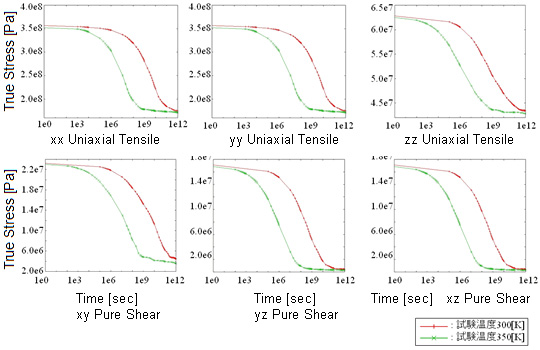We performed a viscoelastic material numerical test assuming a typical polymer-based composite material that was reinforced by a cloth material of fiber bundles within the resin.
Performing a viscoelasticity test on the cloth material is the ultimate purpose, however, it cannot replace the isotropic characteristics because warp and woof (strands) that make up the cloth material have a microstructure in which the monofilament is oriented in one direction. (Reference Image: CAE Manufacturing (Vol.6 2007) Figure 8, Japanese only)
Analysis Model
Numerical material test
Linear homogenization analysis was performed on the micro model of the fiber bundle in warp and weft in advance. Viscoelastic numerical material test was performed by applying the property value obtained here to the cloth material model. Precisely, the viscoelastic properties of the anisotropic should be present because the resin is impregnated into these fiber bundles. However, it was replaced with a linear material by assuming the influence of viscoelastic properties of matrix that make up the cloth material is dominant in evaluating the macro-response of the cloth material (refer Figure 1).
The carbon fiber was used as filament and epoxy resin was used as matrix for the Material constituting the micro model. Stress relaxation properties expressed in Purony series have been defined in the epoxy resin of cloth material. We also consider the temperature dependence by defining a shift function that is represented by the WLF equation.

Figure 1. Overview of Numerical Material Test Model
Analysis Results
Stress Relaxation Test
Figure 2 shows the results of stress relaxation tests performed in CMAS.
It shows the results of the numerical material test in 6 directions that were performed under two temperature environments, 350K and 300K respectively.
In this way, CMAS allows you to predict material behavior under the ideal environment without conducting an actual material test by providing microscale geometric shapes and the physical properties of each region as the known amount.

The new feature that allows development into a macro model by identifying the material properties of the anisotropic viscoelastic data from the stress relaxation test of these will be added in the future version.
Analysis Types
Structural Analysis、Multiscale Analysis、Viscoelastic Analysis
